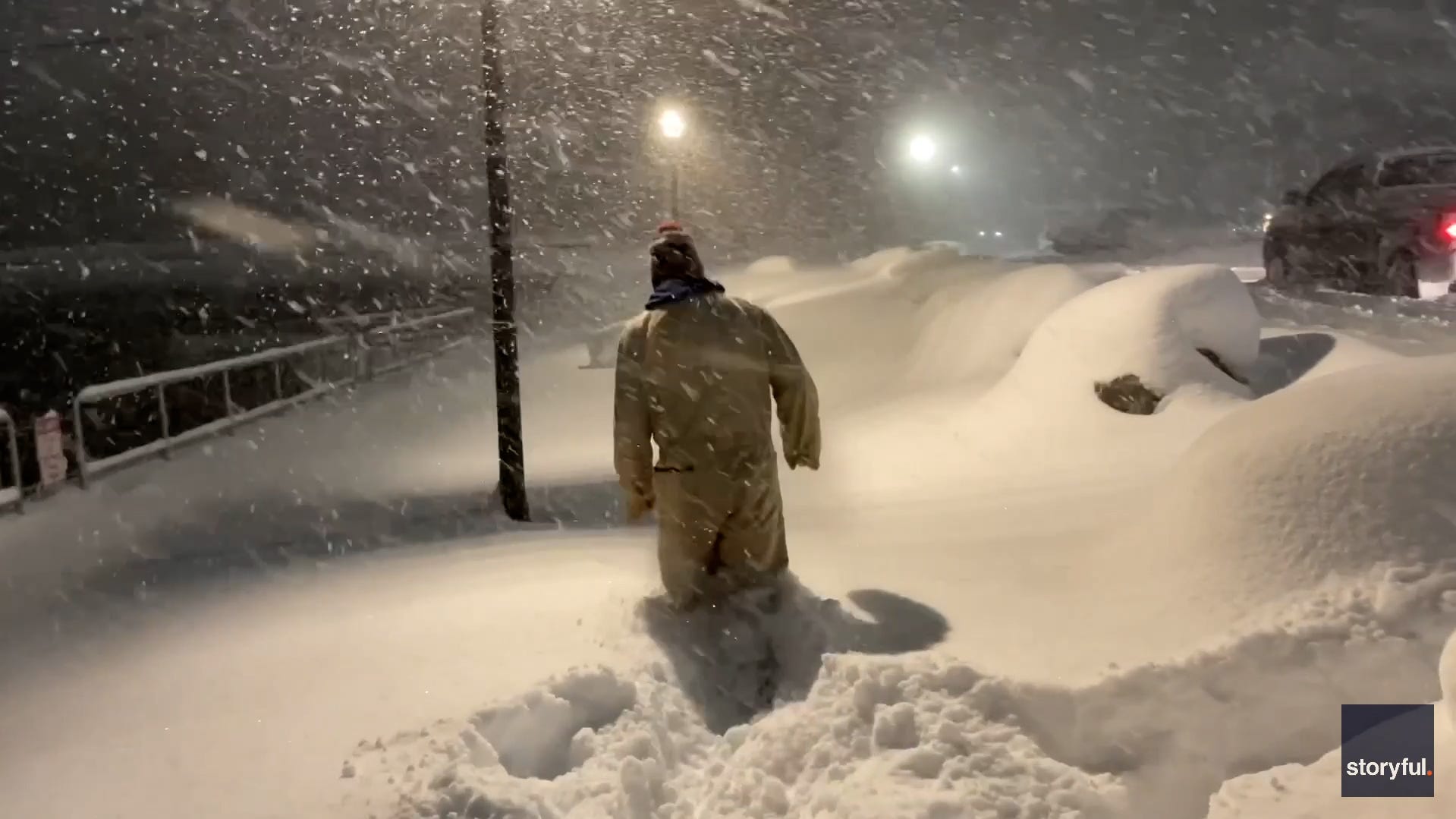What is thundersnow? Rare weather phenomena brings lightning during winter storm

A storm that pummeled dozens of Midwest states with snow during the weekend also brought another weather phenomena, at least to Missouri: Thunder and lightning.
The phenomenon, known as thundersnow, occurs when a thunderstorm produces snow instead of rain. The weather event is so rare that Weather Channel meteorologist Jim Cantore can barely contain his excitement when he's recorded in viral videos witnessing the legendary phenomenon.
But residents of St. Louis, Missouri were able to observe thundersnow Sunday amid a major winter storm that buried Midwestern states under several feet of snow during the weekend. As of Monday morning, tens of millions were under winter storm advisories and hundreds of thousand were without power as the storm began rolling into the Mid-Atlantic region, stretching from southern Illinois to Virginia and Washington, D.C.
Here's what to know about thundersnow:
Thundersnow observed in St. Louis during winter snow storm
Thundersnow, which is simply a snowstorm with thunder and lightning, was most recently reportedly observed in the St. Louis, Missouri region amid the brutal winter storm, according to the National Weather Service.
The phenomenon, which local television station KSDK reported was heard throughout the day Sunday, sounded more muffled than a regular thunderclap. Because it was paired with sleet, residents were able to hear "booms of thunder mixed with the sound of tiny taps," the outlet reported.
What is thundersnow?
When thunder and lightning occur during a snowstorm, meteorologists refer to the phenomenon as thundersnow.
Thundersnow can be found where there is relatively strong instability and abundant moisture above the surface, such as above a warm front according to the National Oceanic and Atmospheric Administration. Thundersnow is also often observed downstream of the Great Salt Lake and the Great Lakes during lake-effect snowstorms.
Thundersnow is most likely to occur during heavy snowfall, which can make it harder for ground observers to witness. However, while the snow sometimes muffles the thunder, the lightning can more easily be seen.
Why is thundersnow a rare phenomenon?
Thunder and lightning are much more common in warm, summer months because of convection, the upward motion of air that helps produce thunderstorms.
Because convection is rare in winter, thunderstorms are less common in the cold seasons, according to NOAA.
But that doesn't mean they're unheard of.
Can you be hit by lightning during a thundersnow storm?
Thundersnow can be just as dangerous as a regular, rain-accompanied thunderstorm.
After all, where there's thunder, there's lightning.
"Probably the last thing you'd think of are lightning safety rules – those are for summer ... but thunder always means there's lightning" Jack Williams, the founding editor of Paste BN's weather page, said in 2022. "And winter lightning is as dangerous as summer lightning."
It's not unheard of for lightning to strike in winter. In 1996, two men were struck by lightning during snowstorms in 1996 – one in Minnesota and the other in Colorado. In 2002, four teenagers in Maine were struck on a hill while sledding, according to the National Lightning Safety Institute.
Contributing: Christopher Cann, Paste BN
Eric Lagatta covers breaking and trending news for Paste BN. Reach him at elagatta@gannett.com